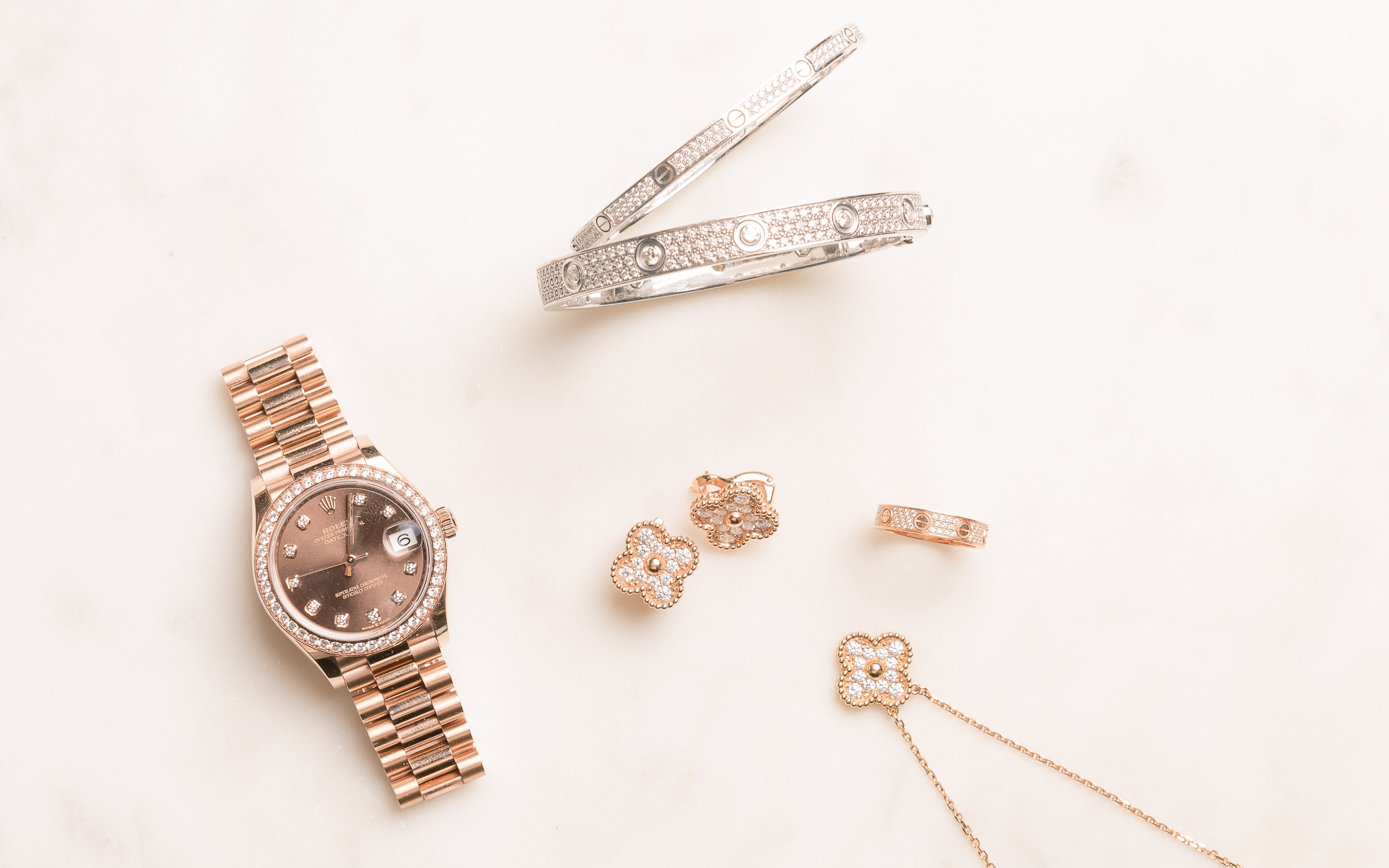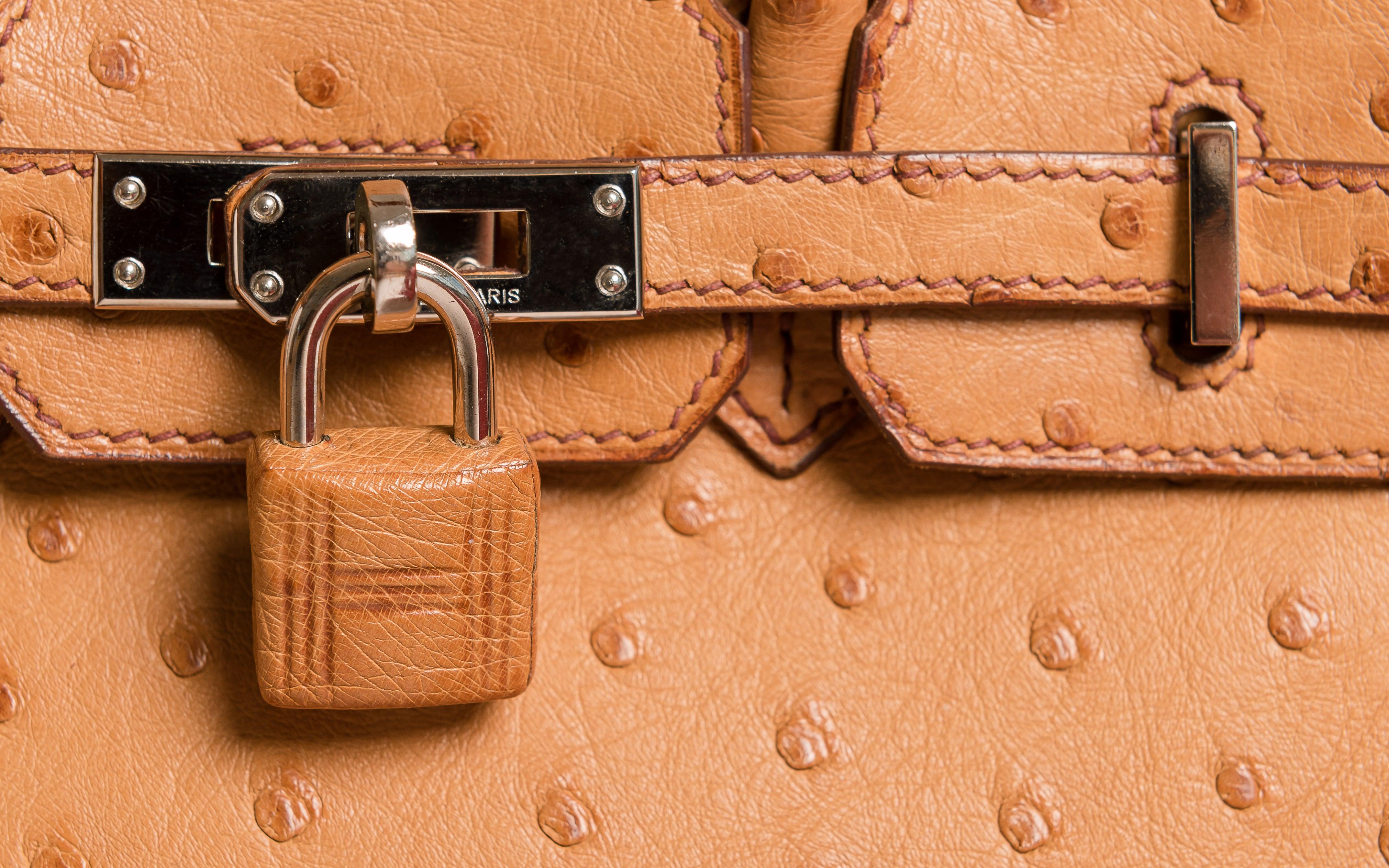Canadian Luxury Resale and Consignment: A Beginner's Guide

Looking to score a designer bag without breaking the bank? The world of second-hand luxury goods is booming. More people are buying and selling pre-owned handbags online.

Buying second-hand lets you own luxury brands for less. But it can feel risky too. How do you know if that Chanel or Louis Vuitton is real? What if it arrives damaged? Don't worry - with some know-how, you can shop confidently.
The second-hand luxury market has grown a lot recently. You can now browse items from all over the world. This gives you more choices than ever. But it also means you need to be careful.
Let's explore how to find your perfect pre-loved designer bag.
Key Takeaways
- Second-hand designer bags offer luxury at lower prices
- Authenticating items is crucial when buying pre-owned
- Online platforms provide wide selection but require careful shopping
Understanding the Second-Hand Designer Bag Market

The second-hand designer bag market has grown rapidly in recent years. Savvy shoppers can find great deals, but must be aware of authenticity concerns.
Popularity and Growth of Secondhand Luxury
Designer bags have become hot items in the resale market. You can often find gently used luxury handbags at a fraction of retail prices. Many view these bags as investments that hold their value well.
Top brands like Chanel, Hermes, and Louis Vuitton are especially sought after. Their bags may even appreciate in value over time.
Online platforms have made it easier to buy and sell pre-owned luxury goods. This has fueled market growth and increased accessibility.
Younger consumers are embracing secondhand luxury for sustainability reasons. They see it as a way to enjoy high-end brands more affordably and eco-consciously.
The Specter of Counterfeits and the Importance of Authenticity
When shopping for second-hand designer bags, you must be vigilant about authenticity. The market is rife with sophisticated fakes that can fool even experienced buyers.
Reputable resale sites use expert authenticators to verify items. They may offer guarantees of authenticity to protect buyers.
You can learn to spot red flags like poor stitching, incorrect logos, or off materials. Researching the specific bag model and brand details is crucial.
Authenticity cards, original receipts, and dust bags can help verify legitimacy. But skilled counterfeiters may fake these too.
When in doubt, consider professional authentication services. The extra cost is worth it for peace of mind on expensive purchases.
Where to Buy and Sell Pre-Owned Designer Bags
The second-hand designer bag market offers many options for buying and selling. You can find great deals or make money from your old bags through online platforms and physical stores.
Online Marketplaces and Resale Platforms
The internet has many places to buy and sell pre-owned designer bags. The RealReal is a popular site for luxury items. They check all bags to make sure they're real.
Fashionphile focuses on high-end handbags and accessories. Vestiaire Collective lets you buy from sellers worldwide. Farfetch has a mix of new and pre-owned luxury goods.
eBay is good for finding deals, but be careful of fakes. The Luxury Closet specializes in designer items from the Middle East. StockX is known for sneakers but also sells bags.
Rebag buys and sells bags quickly. 1stdibs offers vintage and antique luxury items. Re-See focuses on rare vintage pieces.
Reputable Resale Stores and Consignment Shops
Physical stores offer a chance to see bags in person before buying. Neiman Marcus has a "Last Call" section for pre-owned items in some stores.
Yoogi's Closet started online but now has a store in Seattle. They're known for great customer service.
Many cities have local consignment shops that sell designer bags. These shops often have lower prices than big online sites.
Look for stores that promise to check items for authenticity. Some offer to buy your old bags or sell them for you and take a cut of the price.
Ask about return policies when buying from resale stores. Make sure you can return the bag if you're not happy with it.
Evaluating the Condition and Value of Designer Bags
When buying second-hand designer bags, knowing how to check their condition and value is key. This helps you make smart choices and get good deals.
Condition Grades and What They Mean for Resale Value
Designer bags often get grades based on their condition. These grades affect the price. Here's what they mean:
- Like New: Barely used, no visible wear. Highest resale value.
- Very Good: Minor signs of use. Small scratches or marks. Good resale value.
- Good: Clear signs of use. Visible wear on corners or handles. Lower resale value.
- Fair: Heavy wear. May need repairs. Lowest resale value.
The better the condition, the higher the price. A bag in "Like New" condition might sell for 70-80% of its original price. A "Fair" condition bag might only get 30-40%.
Determining the Authenticity and Provenance
Checking if a bag is real is crucial. Here are some tips:
- Look at stitching: It should be even and neat.
- Check hardware: Zippers and clasps should feel solid and have clear brand markings.
- Examine logos: They should be crisp and match official designs.
- Feel the material: Real leather has a distinct smell and texture.
Ask for proof of purchase or authenticity cards. Some resale sites offer authenticity checks. A multi-point physical inspection can help spot fakes. Remember, a bag's history (or provenance) can add value. Bags owned by celebrities or limited editions often sell for more.
Insights into Popular Brands and Bags
The second-hand designer bag market is full of iconic styles and exciting trends. You'll find timeless classics and up-and-coming favorites that are worth your attention.
Iconic Designs That Stand the Test of Time
When shopping for second-hand designer bags, you'll come across legendary styles that never go out of fashion. The Hermes Birkin and Kelly bags are prime examples. These bags hold their value exceptionally well.
Chanel's Classic Flap Bags are another enduring favorite. Their quilted leather and chain straps are instantly recognizable.
Louis Vuitton's Monogram canvas bags have been popular for decades. The Speedy and Neverfull styles are especially sought-after in the second-hand market.
Other timeless picks include:
- Gucci's bamboo-handled bags
- Dior's Lady Dior bag
- Prada's nylon backpacks
- Fendi's Baguette
These bags often increase in value over time, making them smart investments.
Emerging Trends in Second-Hand Designer Bags
While classic styles remain popular, new trends are always emerging in the second-hand bag world. The Loewe Puzzle Bag has gained a big following recently. Its unique shape and craftsmanship make it a standout piece.
Bottega Veneta's woven leather designs are having a moment. The Cassette and Pouch bags are especially trendy right now.
You'll also find growing interest in:
- Staud's architectural designs
- Cult Gaia's statement pieces
- Saint Laurent's Sac De Jour
Vintage Goyard totes are becoming more sought-after. Their durability and understated logo make them appealing to many buyers.
The Gucci Marmont line remains popular in the second-hand market. Its retro-inspired look fits current fashion trends well.
Maximizing Your Investment in Second-Hand Designer Bags
Buying second-hand designer bags can be a smart investment. With the right approach, you can get great deals and even make money reselling. Here are some tips to help you get the most value.
Strategies for Buying and Selling at the Best Price
Look for rare vintage bags that may increase in value over time. Iconic styles from top brands like Chanel or Hermes often hold their worth well.
Research prices on luxury e-commerce sites to know fair market values. This helps you spot good deals when buying and price your bags competitively when selling.
Consider timing your purchases and sales. Many sellers offer discounts during holidays or end-of-season sales. For selling, list when demand is high, like before special events.
Try rental programs to test out bags before buying. This lets you see which styles you really love and use often.
Look into designer Second Life programs that buy back and resell pre-owned bags. These can offer good prices for authentic items.
Maintaining and Storing Your Bags for Longevity
Clean your bags regularly with suitable products. Avoid harsh chemicals that can damage leather or fabrics.
Store bags in dust bags when not in use. Keep them in a cool, dry place away from direct sunlight to prevent fading.
Stuff bags with soft materials to help keep their shape. Use acid-free tissue paper or fabric, not newspaper.
Rotate your bags to prevent wear in the same spots. This spreads out use and extends the life of each bag.
Get professional repairs for any damage. Quick fixes can prevent small issues from becoming bigger problems.
Consider investing in a dehumidifier if you live in a humid climate. This helps prevent mold and mildew growth.
Navigating the Online Shopping Experience
Shopping for second-hand designer bags online can be exciting and daunting. You'll need to research carefully, compare options, and understand buyer protections to find the perfect bag.
How to Conduct Research and Compare Options
Start by browsing multiple resale sites to get a feel for prices and availability. Look for sites that specialize in designer bags and have good reputations.
Compare listing photos closely. Check for signs of wear, damage, or repairs. Then, read item descriptions thoroughly for details on condition and authenticity.
Look up the current retail price of new versions to gauge the deal. Also, research the specific bag model you want to spot fakes more easily.
Use filters to narrow your search by brand, style, condition, and price range. This saves time when browsing large marketplaces.
Check seller ratings and read buyer reviews. Look for sellers with many positive reviews and detailed product photos.
Understanding Return Policies and Buyer Protections
Carefully review each site's return policy before buying. Some allow returns for any reason, while others only accept returns for misrepresented items.
Look for sites that offer authentication services or guarantees. This gives you peace of mind when buying expensive bags.
Check if the marketplace has a buyer protection program. These often cover issues like items not received or not as described.
Be aware of time limits for returns or filing claims. Then, mark important dates on your calendar after purchasing.
Use secure payment methods like PayPal or credit cards. These often provide extra buyer protection if there's an issue with your purchase.
The Role of Authentication in Second-Hand Luxury
Authentication is key when buying second-hand designer bags. It protects you from fakes and ensures you get a genuine luxury item. Let's look at how experts check bags and new tech that helps prove they're real.
Rigorous Authentication Programs and their Processes
Reputable sellers use strict steps to check designer bags. They look at many details:
- Stitching quality and pattern
- Hardware materials and markings
- Logo placement and font
- Interior lining and tags
- Leather quality and smell
Experts compare the bag to known real ones. They also check serial numbers against brand records. Some even use special tools like UV lights to spot fake materials.
Good authenticators train for years. They keep up with new fakes and brand changes. This makes you trust their results more than trying to spot fakes yourself.
Technological Advances in Proving Authenticity
New tech makes it harder for fakes to slip through. Some brands now use NFC-enabled authentication cards. You can scan these with your phone to check if a bag is real.
Other tech used includes:
- Microchips embedded in bags
- Blockchain records of ownership
- AI systems that spot fakes from photos
These tools add extra proof beyond expert eyes. They make it easier for you to buy with confidence.
When shopping, look for sellers who use both human experts and new tech. This combo gives you the best chance of getting a real designer bag.
Building Confidence in Second-Hand Purchases
Buying pre-loved designer bags can be exciting but also nerve-wracking. With the right approach, you can feel secure in your purchases and score amazing deals on authentic items.
Tips for Successful Transactions
When buying used designer bags, always ask for clear photos of the item, including close-ups of logos, stitching, and hardware. Also, request proof of authenticity like original receipts or authentication cards if available.
Research the seller's reputation. Look for positive reviews and high ratings. Don't be afraid to ask questions about the bag's condition or history.
Use secure payment methods that offer buyer protection. PayPal or credit cards are often safer than direct bank transfers.
Consider using trusted resale platforms like The RealReal or Vestiaire Collective. They often have authentication processes in place.
Leveraging Community Knowledge
Join online communities focused on designer handbags. Facebook groups and Reddit forums can be goldmines of information.
Follow Instagram accounts dedicated to spotting fake designer goods. They often post side-by-side comparisons of authentic and counterfeit items.
Participate in discussions about recent purchases. Other members can offer insights or warnings about specific sellers or bag styles.
Lastly, consider getting a professional authentication before buying high-value items. Some services offer online authentication using detailed photos.
Conclusion
Buying second-hand designer bags can be tricky. You need to be careful and do your research.
Look for trusted sellers and get items checked by experts.
The market for pre-owned luxury goods is growing fast. More people want to shop sustainably and save money.
Fashion trendsetters are embracing second-hand items too.
You can find great deals if you're patient. It may take time to find the perfect bag at the right price. Don't rush into purchases.
Always check the condition carefully. Ask for detailed photos and descriptions. Be wary of deals that seem too good to be true.
The future looks bright for luxury resale. More brands are getting involved in the second-hand market. This could mean better options and safer buying for you.
Remember to take care of your pre-owned bags. Proper maintenance will help them last longer and hold their value.
By shopping second-hand, you're making a smart choice for your wallet and the planet. Keep learning and stay savvy in this exciting world of pre-loved luxury.



